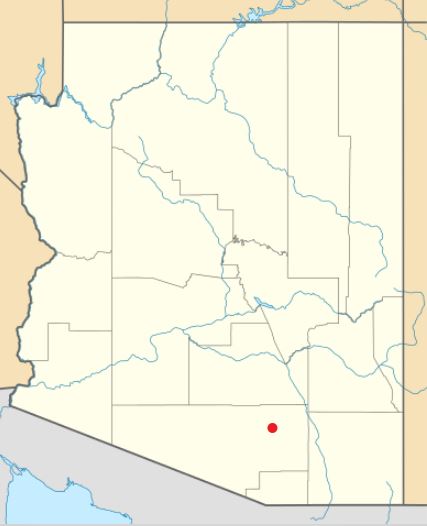To meet Tucson’s water demand through 2050, utilize renewable resources, and comply with Arizona’s Assured Water Supply (AWS) requirements for municipal water providers, Tucson Water developed a plan using a scenario planning process. The resulting plan, Water Plan 2000 – 2050, utilizes two separate scenario plans: A potable plan for utilizing Central Arizona Project (CAP) water, which addresses four futures, and a wastewater treatment plan, which addresses eight futures. These futures were combined into “families of futures” to develop the recommended pathway for Water Plan 2000 – 2050. The plan’s process was presented to the community in the form of a timeline. A timeline allowed Tucson Water to demonstrate the consequences of deviating from the plan in a way that the public could easily understand.
 Since this plan was developed using a scenario planning process, Water Plan 2000 – 2050 is meant to be a living document that will help the community chart the course as the landscape and circumstances change. To do this, the plan includes several decision points accompanied by specific dates, which require internal policy consideration, intensive public outreach and possibly new scenario planning for specific decision points.
Since this plan was developed using a scenario planning process, Water Plan 2000 – 2050 is meant to be a living document that will help the community chart the course as the landscape and circumstances change. To do this, the plan includes several decision points accompanied by specific dates, which require internal policy consideration, intensive public outreach and possibly new scenario planning for specific decision points.
Since the implementation of Water Plan 2000 – 2050, Tucson Water has encountered the first set of decision points. These decision points included deciding whether to fully utilize the CAP renewable supply, which required a decision on whether to continue with an “all recharge” approach or a combination of recharge and conventional surface water treatment.
By incorporating cost, AWS requirements and the need to store the resource to offset the impacts of future shortages on the Colorado River, the decision was made to proceed with an “all recharge” approach. The decision to go with an “all recharge” approach necessitated an additional decision: whether or not to treat the imported CAP water to a lower level of total dissolved solids (TDS). After an intensive public outreach program, the decision was made to forgo TDS treatment but to consider addressing it first on the treated wastewater side of the resource equation.
In 2014, Tucson addressed the next decision point in the plan, how to utilize their treated wastewater resource: by fully utilizing it or to continue to release the water to the Santa Cruz River. In 2011, a new scenario planning effort was conducted to focus this decision, which resulted in the Recycled Water Master Plan.
Although the decision was set for 2014, the need for the water is a decade or two in the future depending on shortage declarations on the Colorado River. The time between the decision point and implementation will allow for small infrastructure projects and a sustained public outreach program before the resource can be fully utilized. Tucson has the luxury of implementing the Recycled Water Master Plan before a crisis occurs.
Something that sets Water Plan 2000 – 2050 apart from most planning processes is the adaptability and flexibility of the planning process. The plan addresses outcomes of earlier decisions, sets the framework for new plan development like the Recycled Water Master Plan and addresses changes in demand that deviates from the original plan.
To keep this document living and evolving, this process requires periodic updates to address changing factors like declines in gallon/capita/day use, slower population growth and outcomes of decisions on the recommended pathway. Using a planning process that addresses multiple futures increases confidence that the decisions made today will remain viable in the future.
The development of Water Plan 2000 – 2050 shows the resolve of Tucson to meet the goals that support their water demands today and into the future.
Tucson Water Plan – 2012 Update Downloaded from ResilientWest.org
Tucson Water Plan 2000 – 2050 – website
2012_Update_Water_Plan_2000-2050
a project of
Resilient Communities and Watersheds
- Challenges:
- watereuse
- watersupply
- State:
- arizona
- Scale:
- community
- Type:
- urban

